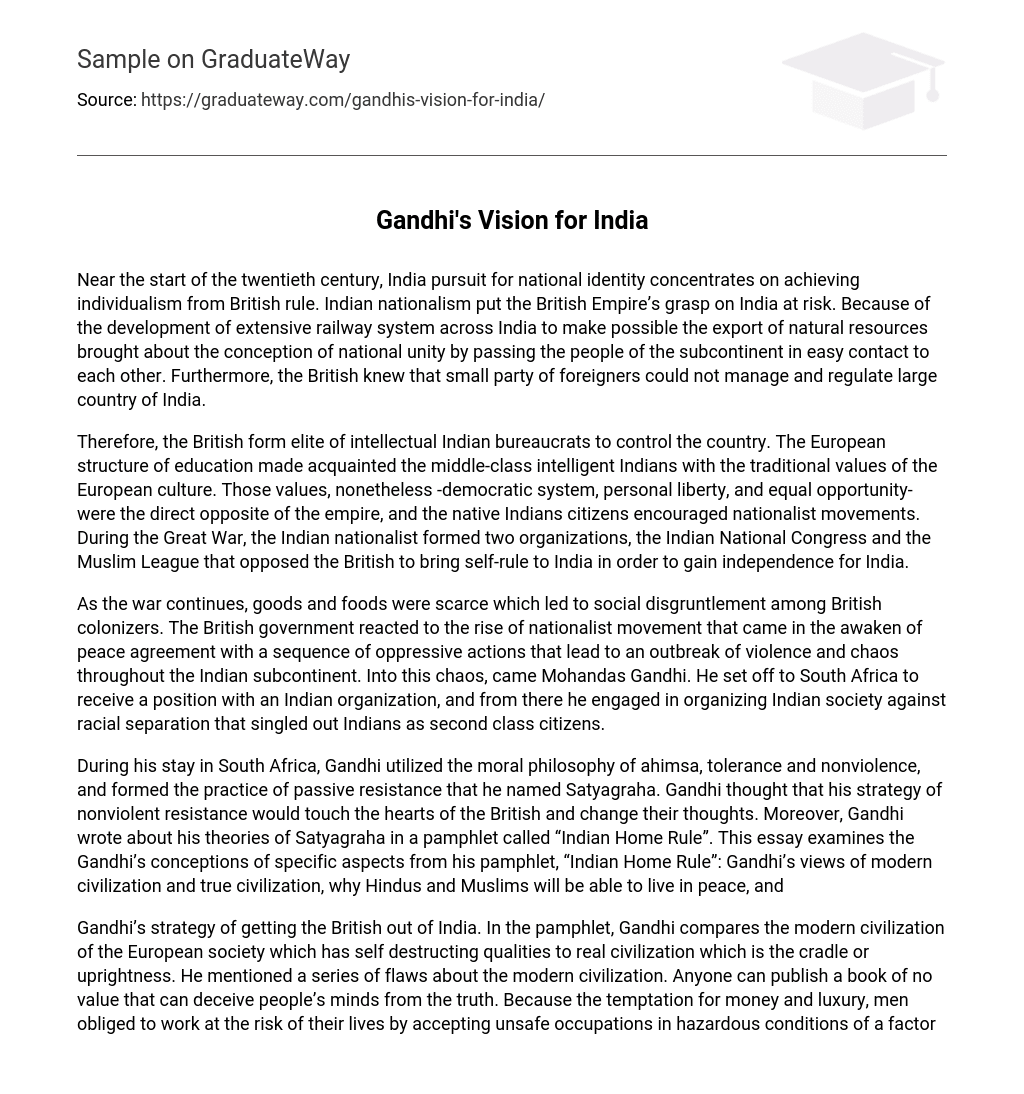In the early 1900s, India focused on establishing its own identity separate from British rule, thus challenging the British Empire’s control over the country. The construction of a vast railway network in India, facilitating the export of natural resources, played a significant role in nurturing a sense of national unity by fostering communication among the people of the subcontinent. Additionally, the British recognized that a small group of foreigners would be unable to effectively govern and oversee such a large country like India.
Therefore, the British formed an intellectual elite of Indian bureaucrats to exert control over the country. The European education system introduced middle-class intelligent Indians to the traditional values of European culture, such as democratic principles, personal freedom, and equal opportunities. These values, however, contradicted the empire’s objectives, leading native Indian citizens to support nationalist movements. Amidst the Great War, Indian nationalists established two organizations, the Indian National Congress and the Muslim League, which opposed British rule and aimed to achieve self-governance for India in their quest for independence.
Due to the ongoing war, there was a shortage of goods and food, causing dissatisfaction among British colonizers. In response to the rise of nationalist movement after the peace agreement, the British government took oppressive measures that resulted in violence and chaos in the Indian subcontinent. Amidst this turmoil, Mohandas Gandhi emerged. He traveled to South Africa to work for an Indian organization and subsequently worked towards organizing Indian society against racial segregation, which treated Indians as inferior citizens.
During his time in South Africa, Gandhi employed the moral principles of ahimsa, tolerance, and nonviolence. He also developed the method of peaceful resistance, which he referred to as Satyagraha. Gandhi believed that his nonviolent approach would appeal to the British and alter their mindset. Additionally, he wrote about his Satyagraha philosophy in a pamphlet called “Indian Home Rule.” This essay explores certain concepts from the pamphlet, such as Gandhi’s perspectives on modern civilization versus genuine civilization, the potential for harmony between Hindus and Muslims, and
In his pamphlet, Gandhi discusses his strategy for achieving independence from British rule in India. He contrasts the modern civilization of European society, which he believes has destructive qualities, with a true civilization that embodies righteousness. He points out several flaws in the modern civilization, such as the ability for anyone to publish a misleading book that can manipulate people’s thoughts and divert them from the truth. Additionally, he highlights the role of money and luxury in coercing individuals to engage in dangerous occupations within factories, risking their lives. Furthermore, he stresses the potential for a single individual with a gun to take the lives of thousands.
Other inhabitants of different countries who are not adapted to European customs of society are considered barbarians and need to be civilized. Women are either behaving as harlots, wandering in the streets, or forced to work in factories. According to Gandhi, this type of civilization lacks morality and religion, resulting in a lack of true physical strength and courage. In contrast, Gandhi associates real civilization with the culture of India. He emphasizes that a true civilization is one that has good conduct and allows morality to achieve self-control over one’s mind and passions.
Gandhi explains why Hindus and Muslims can coexist peacefully, as they both aim to fulfill God’s will on earth and recognize the futility of religious conflicts. They acknowledge that neither group would abandon their religion through violence, hence opting for peaceful coexistence. Gandhi concludes that Hindus and Muslims, as fellow countrymen in India, must therefore live harmoniously together, motivated by their own religious convictions.
Furthermore, Gandhi discusses his strategy of nonviolent tactics to compel the British to depart from India. He employs passive resistance as a means to influence the British to cease their discriminatory acts against Indian citizens. According to Gandhi, “Passive resistance is a method of attaining rights through personal suffering. The fact that numerous individuals are still alive in the world indicates that it is founded not on armed force, but on truth and love” [qtd. in Overfield 46]. Additionally, Gandhi asserts that “Passive resistance is a versatile weapon; it can be utilized in any way and bestows blessings upon both its wielder and the one against whom it is employed. Without shedding a drop of blood, it yields extensive consequences” [qtd. in Overfield 46]. In conclusion, Mohandas Gandhi’s pamphlet, Indian Home Rule, aims to inspire Indian nationalists to strive for liberation from British rule. A group of Indian nationalists, hopeful that Gandhi’s doctrines of Satyagraha would prove successful against the British, lend their support to the movement to oust the British.
Worked Cited
The source for this information is a book titled “Mohandas Gandhi, Indian Home Rule” written by Overfield, James et al and published by Wadsworth, Cengage learning in Boston, MA. The book was printed in 2009-2012.





